Panasonic Lumix DMC-L10 Review
Review Date: November 2nd 2007
Author: Mark Goldstein
Leave a comment about this Review
|
Image Quality
All of the sample images in this Review were captured using the 10M (3648 x 2736 pixels) JPEG image size option producing a file that is around 4.5Mb in size.
Noise
The Panasonic Lumix DMC-L10 has 5 ISO settings. There is virtually no discernible noise at of ISO 100-400, with noise and slight blurring of detail apparent at ISO 800, particularly in the shadow areas. At the fastest setting of ISO 1600 image quality has deterioated quite a lot as the camera blurs detail to try and hide the noise, but it's still usable in an emergency. Here are some 100% crops which show the noise levels for each ISO setting.
ISO 100 (100% Crop) |
ISO 200 (100% Crop) |
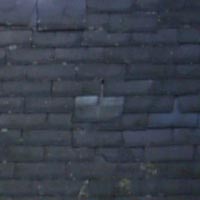 |
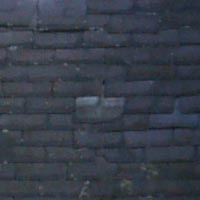 |
ISO 400 (100% Crop) |
ISO 800 (100% Crop) |
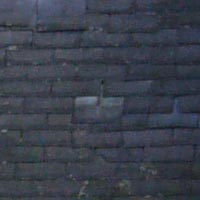 |
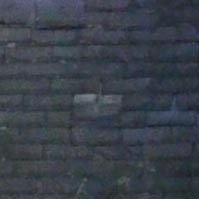 |
ISO 1600 (100% Crop) |
|
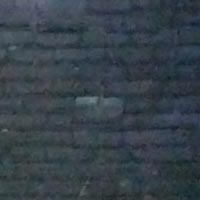 |
Sharpening
Here are two 100% crops which have been Saved as Web - Quality 50 in Photoshop. The right-hand image has had some sharpening applied in Photoshop. The out-of-the camera images at the default setting are slightly soft and benefit from some further sharpening in a program like Adobe Photoshop. Alternatively you can change the in-camera sharpening level if you don't like the default results.
Original
(100% Crop)
|
Sharpened (100% Crop) |
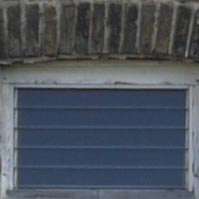 |
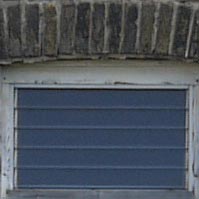 |
 |
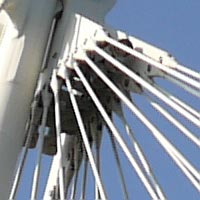 |
RAW Format
The Panasonic Lumix DMC-L10 enables users to capture both JPEG and RAW format files. We've provided a few RAW samples for you to download and evaluate.
Download
Example #1
Download
Example #2
Download
Example #3
Chromatic Aberrations
As the Panasonic Lumix DMC-L10 is a digital SLR, it's the Leica 14-50mm kit lens f/3.8-5.6 kit lens that determines the amount of chromatic aberrations, not the camera body. This lens dealt fantastically well with chromatic aberrations during the review, with barely any purple fringing present around the edges of objects in high-contrast situations. Here is a 100% crop which shows the typical chromatic aberrations that you can expect:
|
Chromatic
Aberrations (100% Crop)
|
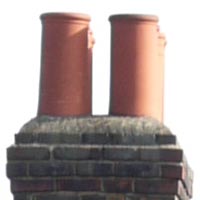 |
Macro
As the Panasonic Lumix DMC-L10 is a digital SLR, it's the Leica 14-50mm kit lens f/3.8-5.6 kit lens that determines how close you can get to the subject, not the camera body. The first image shows how close you can get to the subject using this lens (in this case a compact flash card). The second image is a 100% crop.
|
Macro Shot |
Macro Shot (100% Crop) |
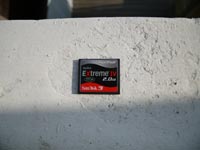 |
 |
Flash
The Panasonic Lumix DMC-L10 has a built-in pop-up flash and a hotshoe for an external flashgun. The flash settings on the Panasonic Lumix DMC-L10 are Auto, Auto/Red-eye Reduction, Forced On, Forced On/Red-eye Reduction, Slow Sync., Slow Sync./Red-eye Reduction, and Forced Off. These shots of a white coloured wall were taken with the pop-up flash at a distance of 1.5m. There's some vignetting apparent at the Leica 14-50mm kit lens f/3.8-5.6 kit lens' 28mm wide-angle setting.
|
Forced Off - Wide Angle (28mm) |
Forced On - Wide Angle (28mm) |
 |
 |
|
Forced Off - Telephoto (100mm) |
Forced On - Telephoto (100mm) |
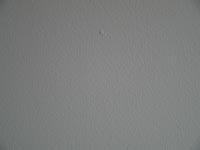 |
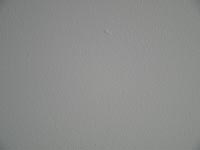 |
And here are some portrait shots. As you can see, neither the Forced On or Forced On/Red-eye Reduction options caused any amount of red-eye.
|
Forced On |
Forced On (100% Crop) |
 |
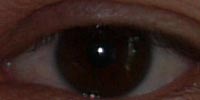 |
|
Forced On/Red-eye Reduction |
Forced On/Red-eye Reduction (100% Crop) |
 |
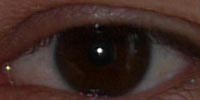 |
Night Shot
The Panasonic Lumix DMC-L10's maximum shutter speed is 60 seconds and there's also a Bulb option in the Manual shooting mode, which is excellent news if you're interested in night photography. The shot below was taken using a shutter speed of 20 seconds, aperture of f/11 at ISO 100. I've included a 100% crop of the image to show what the quality is like.
|
Night Shot |
Night Shot (100% Crop) |
 |
 |
Anti Shake
The Panasonic Lumix DMC-L10 has an anti-shake mechanism called Mega O.I.S, which allows you to take sharp photos at slower shutter speeds than other digital cameras without a similar system. To test this, I took 2 handheld shots of the same subject with the ISO speed set to 200. The first shot was taken with anti shake turned off, the second with it turned on. Here is a 100% crop of the image to show the results. As you can see, with anti shake turned on, the images are much sharper than with anti shake turned off. This feature really does seem to make a difference and could mean capturing a successful, sharp shot or missing the opportunity altogether.
| Shutter Speed / Focal Length |
Anti Shake Off (100% crop) |
Anti Shake On (100% crop) |
| 0.5 sec / 100mm |
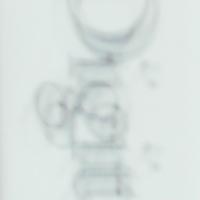 |
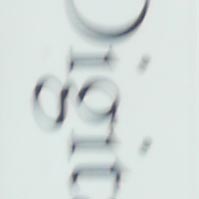 |
| 0.5 sec / 50mm |  |
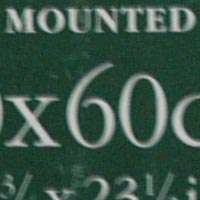 |
Overall Image Quality
The Panasonic Lumix DMC-L10 and Leica 14-50mm kit lens f/3.8-5.6 kit lens produced images of very good quality during the review period. The 10 megapixel images were slightly soft straight out of the camera at the default sharpening setting and ideally require some further sharpening in an application like Adobe Photoshop, or you can change the in-camera setting. The Leica lens dealt superbly well with chromatic aberrations, with very limited purple fringing effects appearing only in high contrast situations. It's not the best performing lens for macro shots though. The built-in flash worked well indoors, with no red-eye and adequate exposure. The night photograph was very good, with the maximum shutter speed of 60 seconds allowing you to capture plenty of light. Anti-shake is a feature that sets this camera apart from its competitors and one that works very well when hand-holding the camera in low-light conditions or when using the telephoto end of the zoom range. The Panasonic Lumix DMC-L10 produces noise-free images at ISO 100-400, with ISO 800 showing some noise and blurring of detail, and the fastest speed of ISO 1600 useful as a last resort.
|
![]() PhotographyBLOG
is a member of the DIWA
organisation. Our test results for the Panasonic Lumix DMC-L10 have
been submitted to DIWA
for comparison with test results for different samples of
the same camera model supplied by other DIWA
member sites.
PhotographyBLOG
is a member of the DIWA
organisation. Our test results for the Panasonic Lumix DMC-L10 have
been submitted to DIWA
for comparison with test results for different samples of
the same camera model supplied by other DIWA
member sites.
